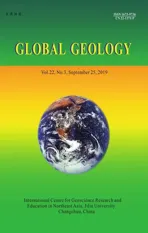Zircon U-Pb geochronology and geochemistry ofgranite in Huoluotai area of northern Great Hinggan Range
2019-09-18CAOZiangSUNFengyueLILiangJIAXiaoyuandLIJianzhi
CAO Zi’ang, SUN Fengyue*, LI Liang, JIA Xiaoyu and LI Jianzhi
1.College of Earth Sciences, Jilin University, Changchun 130061, China;2.The 3rd Oil Production Plant of Daqing Oilfield, Daqing 163318, Heilongjiang, China
Abstract: Zircon LA-ICP-MS U-Pb geochronology of Huoluotai granite in the studied area shows that the weighted mean age of the rock is 148.12±0.85 Ma, which is of Early Cretaceous. The composition of elementary geochemistry indicates that the granite has high content of SiO2(66.53%--68.92%), K2O+Na2O (8.80%--9.02%) and Al2O3 (15.16%--16.09%), but low MgO (0.72%--0.91%) and Mg# (23.59--29.51). The aluminum saturation index (A/CNK) is 0.87--0.95, with high Sr content of (466.00--688.00)×10-6 and low Y of (4.65--6.22)×10-6. It is indicated that the granite is a set of adakitic rocks with the characteristics of high-K calc-alkaline series. Fraction of light and heavy rare earth elements is obvious, with (La/Yb)N=58.22--117.91, and anomaly of Eu is feeble (δEu=0.83--0.99). The samples are also enriched in light rare earth elements and large ion elements (Rb, K), depleted in heavy earth elements and high field strength elements (Nb,Ti, P, Zr). Combined with the characteristics of regional tectonic evolution, it is suggested that the fine granite originated from the partial melting of the thickened lower crust, which should be related to the collision compression orogeny after the closure of the Mongolia-Okhotsk Ocean.
Keywords: Great Hinggan Range; granite; U-Pb geochronology; adakite; Huoluotai area
0 Introduction
Since Adakite was proposed by Defant and Drummond in the 1990s (Defant & Drummond, 1990), it has attracted attentions of geoscientists at home and abroad. With the deepening of researches on it (Wangetal., 2000), the terminology Adakite has been greatly expanded. It now refers to intermediate-acid igneous rocks with specific geochemical properties, e.g., SiO2>56%, Al2O3>15%, MgO<3%( rarely more than 6%), high Sr ( rarely more than <400×10-6), low Y (<18×10-6), and deficient in heavy rare earth elements and high field strength elements (Nb,Ta,Ti,P), with no or weak Eu anomalies, and the ratio of87Sr/86Sr is less than 0.704 0. The main mineral assemblage is plagioclase and amphibole, and others are biotite, pyroxene and opaque minerals. The origin of adakite was originally interpreted as being from partial melting at a depth of about 80 km of young slabs (<25 Ma) subducted at a small angle (Kayetal., 1978). The residues are garnet-bearing rocks, such as eclogites. However, in recent years, with the in-depth study of adakite, it has been found that adakite was formed not only in the subduction environment of direct melting of young oceanic plates, but also in the bottom of the thickened lower crust(Zhangetal., 2002).
A large number of Mesozoic intrusive rocks are distributed in the Great Hinggan Range, and they were formed in the Middle-Late Triassic and Early Cretaceous, which is one of the hot spots concerned by scholars at home and abroad(Sunetal., 2009). These studies provide important information for revealing the mechanism of crustal growth and tectonic evolution in the Great Hinggan Range. Among them, the Middle-Late Triassic intrusive rocks, such as Sanchangshan, Chagan, Toudaohe and Budunhua, formed in the lithospheric extensional tectonic environment after the closure of the Paleo-Asian Ocean and originated from partial melting of lower crustal materials. Whereas for the Early Cretaceous intrusive rocks, such as Bijiadian, Sandaoqiao, Sandor Wuchagou, which are type I granites; Chaihe Forestry, Hamagou Forestry, Aershan Nanxing’an and Lvshui, which are A-type granite. Isotope geochemical data show that their magma source area is young crustal material with depleted mantle, formed in extensional tectonic environment, and is the main body of Mesozoic intrusive rocks in Great Hinggan Range area. However, compared with the widely distributed Mesozoic intrusive rocks in the Greater Hinggan Range, there are still large areas of Mesozoic intrusive rocks with limited research undertaken, except geological survey of rock mass, which to some extent restricts the overall understanding of the petrogenesis and diagenetic dynamic background of the area. To further understand the genesis and tectonic setting of Mesozoic intrusive rocks in this area, this paper studies the petrogeochemistry and chronology of fine-grained granites in Huoluotai area, in northeastern Great Hinggan Range, and discusses the tectonic setting of the fine-grained granites in combination with relevant regional data, providing evidence for the study of the evolution of the Mongolian-Okhotsk suture zone (Wangetal., 2006).
1 Geological background and sample description
1.1 Geological background
The Huoluotai area is located in the central uplift zone of Erguna massif, adjacent to the Upper Heilongjiang Depression in the north and to the western slope of the northern part of the Great Hinggan Range Mesozoic volcanic belt in the east (Fig.1). There are five important stages of granitic magmatism in northeastern China, i.e., 475--505 Ma, 310--340 Ma, 240--270 Ma, 170--200 Ma and 115--145 Ma (Wuetal., 2011), respectively. Late Paleozoic (310--340 Ma) and Early Cretaceous (115--145 Ma) granites mainly occurred in the Great Hinggan Range area. During the period of 240--270 Ma, it was represented by a set of high-K calc-alkaline rocks, formed in the active continental margin environment where the Mongolian-Okhotsk oceanic plate subducted under the Erguna massif. From 170 to 200 Ma, the intrusive rocks are represented by monzonite in type I and syenite in type A.
There are very limited outcrops of sedimentary strata in the study area, there only exists the Late Proterozoic Xinghua Formation of the Xinghua Dukou Group , with an area of less than 10% of the total area, and most of them are the erosion remnants. The youngest strata are Quaternary Holocene. The intrusive rocks are widely distributed, accounting for about 90% of the total area. Acidic intrusive rocks are dominant, and monzonitic granitic gneiss (Pt2gn) mainly occurs in the southwestern side of the work area, as xenoliths in the later intrusive bodies. The porphyritic granite and medium-coarse-grained granite are widely distributed, fine-grained granite locally occurred and monzonitic granite and granodiorite (K1γδ) occur as rock stocks. The fault structure is approximately NNE-trending.
1.2 Sample description
The hand specimens of granite are grayish-white, slightly altered, fine-grained, with massive structure. By observing under the microscope, it shows that the granite mainly consists of plagioclase (55%±), amphibole (40%±) and quartz (5%±). Amphibole is in brown color,-automorphic to semi-automorphic granular, with good automorphism of hexagon observed in its cross-section. The highest interference color reaches the top of the second level. The particle size is generally 1.0--1.5 mm. Plagioclase shows semi-automorphic to automorphic plate texture, with lengths of 1.0--2.0 mm and the widths of 0.2--1.0 mm. Polysynthetic twins are developed, and the highest interference color is gray(Fig.2).

Fig.1 Geological map of studied area
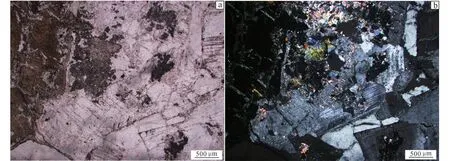
Fig.2 Microphotographs of granite in Huoluotai area
2 Analysis methods
Zircon single mineral selection was completed in Jilin University Test Science Laboratory Center, using standard heavy mineral separation technology to select the zircon with few cracks, high transparency and clean. Sample target preparation, reflection light, cathodoluminescence (CL) photography and U-Pb isotope analysis were also carried out in Jilin University. The preparation of zircon sample target is basically the same as that of SHRIMP dating zircon sample (Songetal., 2002). Under binoculars, zircon was selected and pasted on the double-sided adhesive according to the size of particle, then fixed with colorless transparent arc epoxy resin, and polished to the center of zircon after solidification. Before the test, the crystal morphology and internal structure of zircon were revealed by reflecting light and cathodoluminescence images, and the best test points were selected. In this test, the diameter of laser ablation spot is 32 micron, and the depth of laser ablation sample is 20--40 micron. He is used as carrier gas of ablation material in the experiment. Zircon age is determined by international standard zircon 91500, element content by NIST SRM610 and 29 Si by internal standard element (32.8% of SiO2in zircon Yuanetal., 2008). Analytical methods (Yangetal., 2004) and common lead correction methods (Andersonetal., 2002) can be found in literatures. The calculation of isotope ratio and element content of samples is carried out by ICP-MS-DATECAL program (Liuetal., 2008). Isoplot program is used for age calculation and harmonic plotting (Ludwigetal., 2003).
The main and trace elements of the experiment were analyzed and tested in the Test Science Experimental Center of Jilin University. The main elements were determined by X-ray fluorescence spectrometer (PW1401/10) (GB/T14506.28-93), and the relative standard deviation was 2%--5%. The analysis of trace elements and rare earth elements was carried out by Agilent 7500A Coupled Plasma Mass Spectrometer (Z/T0223-2001) of Agilent Technology Co., Ltd. USA. The samples were monitored by international standard BHVO-2, BC4-2 and national standard GBW07103 and GB207104. The analysis accuracy of trace elements and rare earth elements was as follows: the error of element content >10×10-6was less than 5%, and the error of <10×10-6was less than 10%.
3 Analysis results
3.1 LA-ICP-MS zircon U-Pb geochronology
The sample HLT-ZK16-3-N9 (granite) zircon has better euhedral crystalline and crystal plane (Fig.3), and is mainly columnar. The ratio of crystal axis length is more than 1∶1--2∶1. The cathodoluminescence images (CL) show that the zircons have clear rhythmic zoning structure indicating magmatic crystalline zircon. The measured results show that the U content is (273--929)×10-6, the Th content is (298--1351)×10-6, and the Th/U varies greatly, ranging from 0.84 to 1.45 (>0.1), showing the characteristics of magmatic zircon. The weighted average age of the 20 test points is 148.12±0.85 Ma and MSWD=0.026, which represents the magma emplacement was in Early Cretaceous (Fig.4).
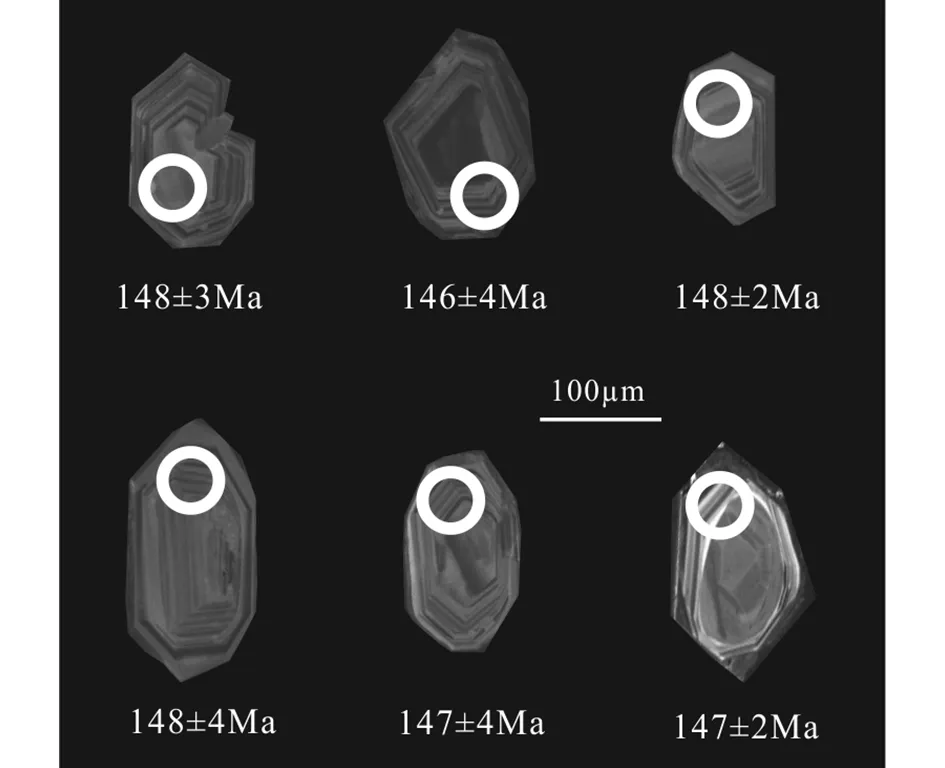
Fig.3 CL images of zircons from Huoluotai monzonitic granite
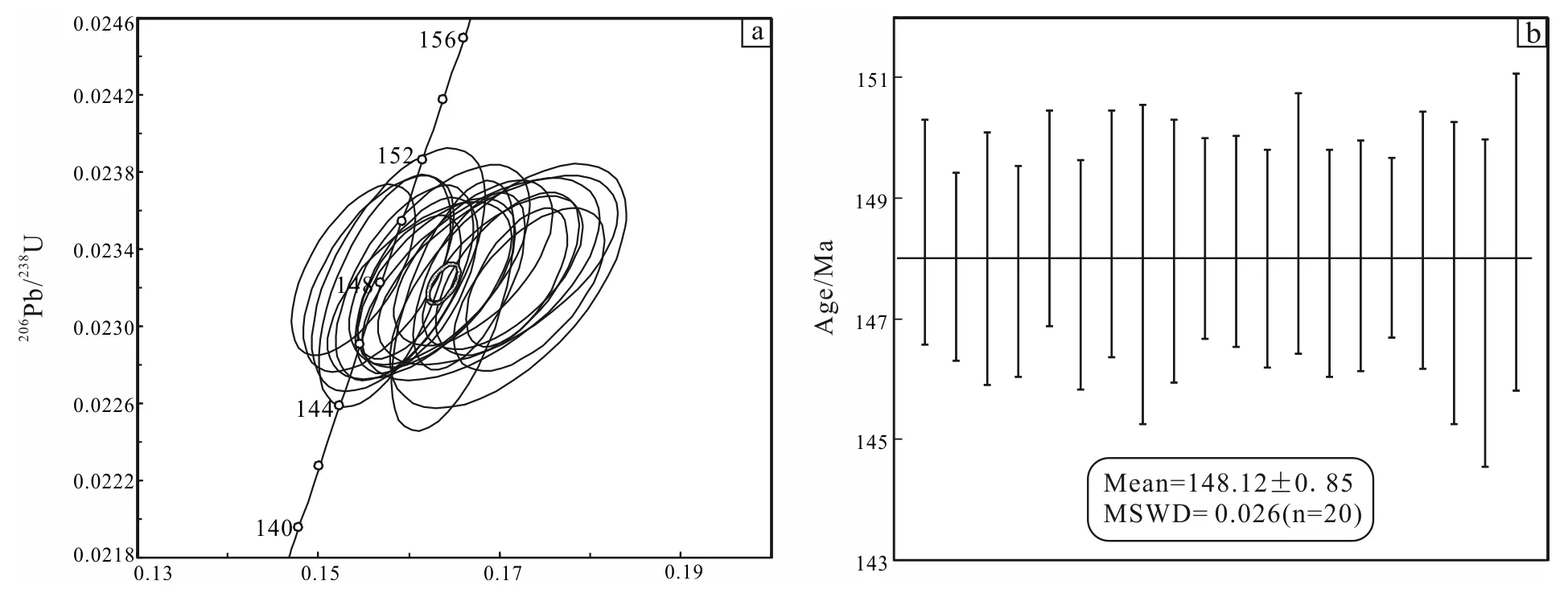
Fig.4 Diagrams of zircon U-Pb concordia and weighted average ages for Huoluotai granite
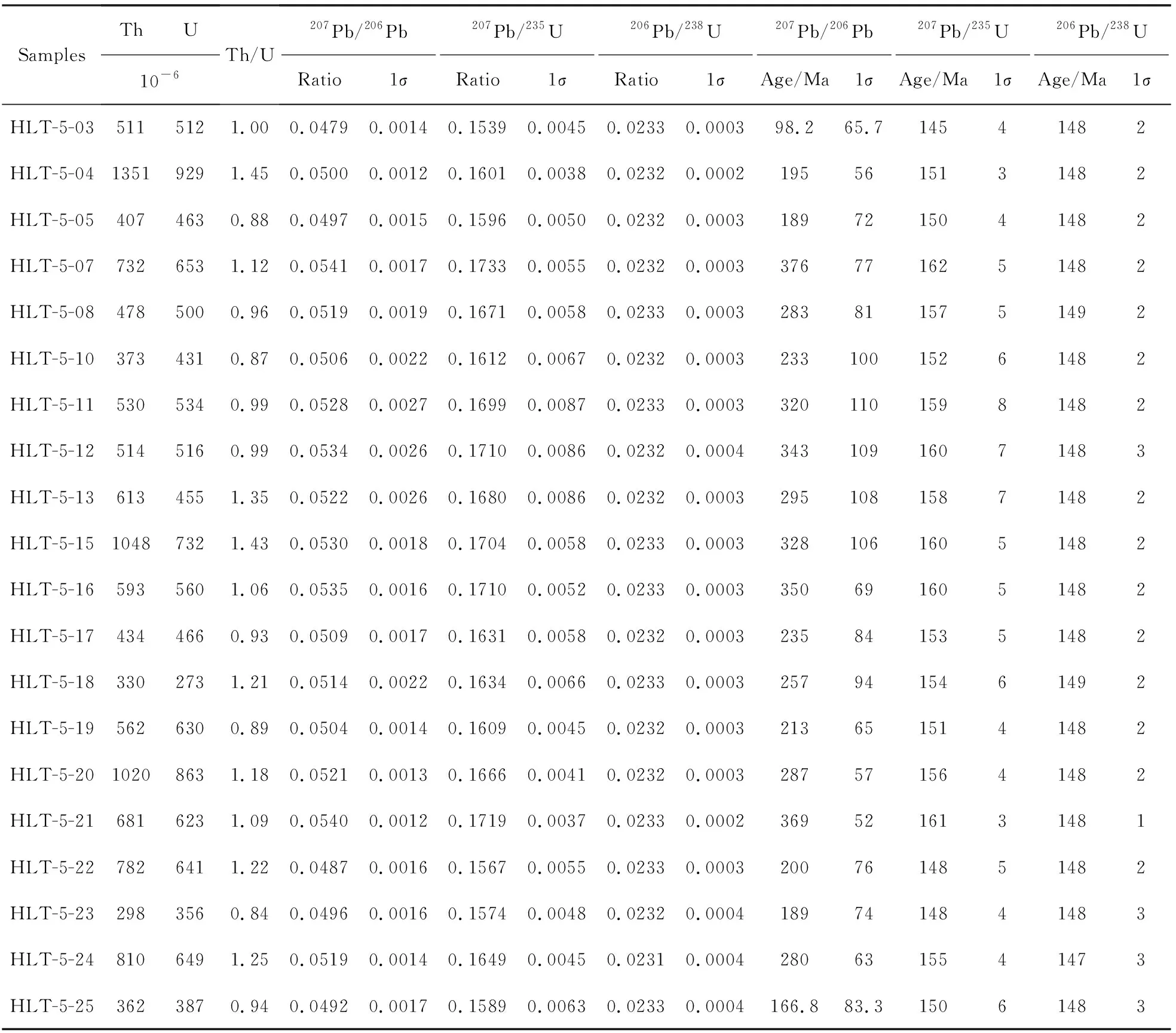
SamplesThU10-6Th/U207Pb/206Pb 207Pb/235U206Pb/238U207Pb/206Pb 207Pb/235U206Pb/238URatio1σRatio1σRatio1σAge/Ma1σAge/Ma1σAge/Ma1σHLT-5-03511 512 1.00 0.0479 0.0014 0.1539 0.0045 0.0233 0.0003 98.2 65.7 145 4 148 2 HLT-5-041351 929 1.45 0.0500 0.0012 0.1601 0.0038 0.0232 0.0002 195 56 151 3 148 2 HLT-5-05407 463 0.88 0.0497 0.0015 0.1596 0.0050 0.0232 0.0003 189 72 150 4 148 2 HLT-5-07732 653 1.12 0.0541 0.0017 0.1733 0.0055 0.0232 0.0003 376 77 162 5 148 2 HLT-5-08478 500 0.96 0.0519 0.0019 0.1671 0.0058 0.0233 0.0003 283 81 157 5 149 2 HLT-5-10373 431 0.87 0.0506 0.0022 0.1612 0.0067 0.0232 0.0003 233 100 152 6 148 2 HLT-5-11530 534 0.99 0.0528 0.0027 0.1699 0.0087 0.0233 0.0003 320 110 159 8 148 2 HLT-5-12514 516 0.99 0.0534 0.0026 0.1710 0.0086 0.0232 0.0004 343 109 160 7 148 3 HLT-5-13613 455 1.35 0.0522 0.0026 0.1680 0.0086 0.0232 0.0003 295 108 158 7 148 2 HLT-5-151048 732 1.43 0.0530 0.0018 0.1704 0.0058 0.0233 0.0003 328 106 160 5 148 2 HLT-5-16593 560 1.06 0.0535 0.0016 0.1710 0.0052 0.0233 0.0003 350 69 160 5 148 2 HLT-5-17434 466 0.93 0.0509 0.0017 0.1631 0.0058 0.0232 0.0003 235 84 153 5 148 2 HLT-5-18330 273 1.21 0.0514 0.0022 0.1634 0.0066 0.0233 0.0003 257 94 154 6 149 2 HLT-5-19562 630 0.89 0.0504 0.0014 0.1609 0.0045 0.0232 0.0003 213 65 151 4 148 2 HLT-5-201020 863 1.18 0.0521 0.0013 0.1666 0.0041 0.0232 0.0003 287 57 156 4 148 2 HLT-5-21681 623 1.09 0.0540 0.0012 0.1719 0.0037 0.0233 0.0002 369 52 161 3 148 1 HLT-5-22782 641 1.22 0.0487 0.0016 0.1567 0.0055 0.0233 0.0003 200 76 148 5 148 2 HLT-5-23298 356 0.84 0.0496 0.0016 0.1574 0.0048 0.0232 0.0004 189 74 148 4 148 3 HLT-5-24810 649 1.25 0.0519 0.0014 0.1649 0.0045 0.0231 0.0004 280 63 155 4 147 3 HLT-5-25362 387 0.94 0.0492 0.0017 0.1589 0.0063 0.0233 0.0004 166.8 83.3 150 6 148 3
3.2 Geochemical characteristics of rocks
3.2.1 Major elements
The analysis results of major elements show that the SiO2content of fine-grained granite in Huolotai area is 66.53%--68.92%, total alkali (K2O+Na2O) content is 8.80%--9.02%, Al2O3content is 15.16%--16.09%, TFe2O3content is 4.33%--5.38%, MgO content is 0.72%--0.91%, Mg#value is 23.59--29.51(Table 2). All samples fall into the range of subalkaline quartz monzonite in TAS diagram (Fig.5). The Al saturation index (A/CNK value) ranges from 0.87 to 0.95. They are quasi-aluminous rocks and fall to the left of I-S line (A/CNK<1.1) in A/NK-A/CNK diagram (Fig.6a). The SiO2-K2O diagram shows that they are in high K-Ca-alkaline series (Fig.6b). The samples belong to type I granite.
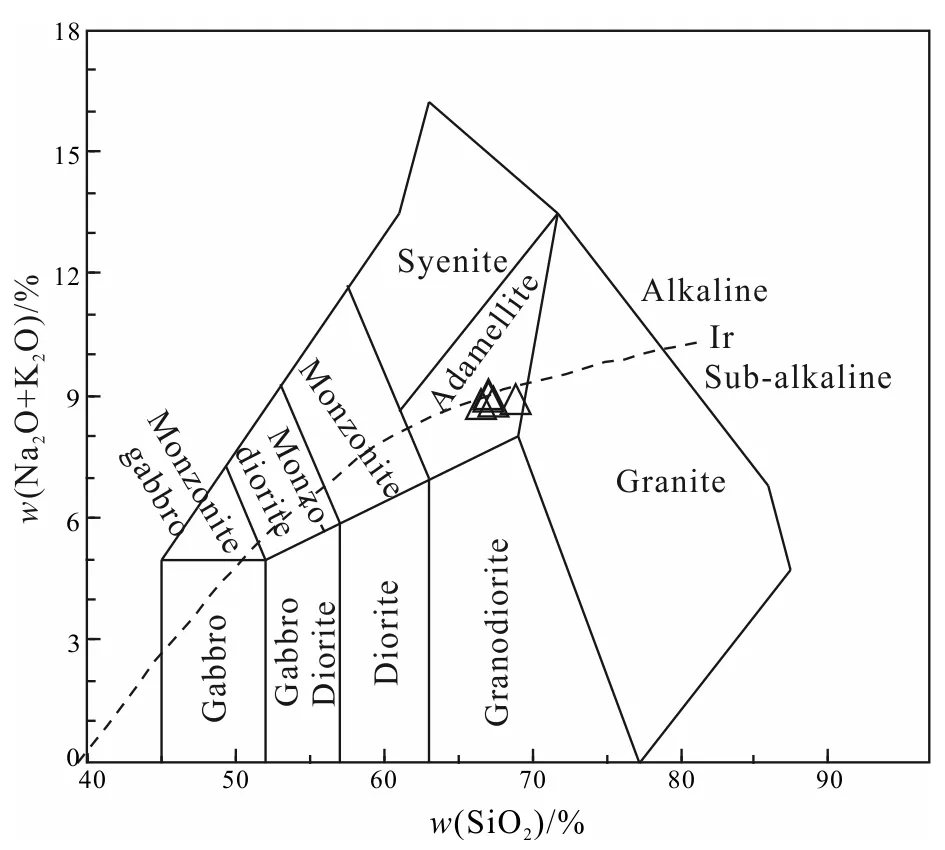
Fig.5 TAS diagram for granite in Huoluotai
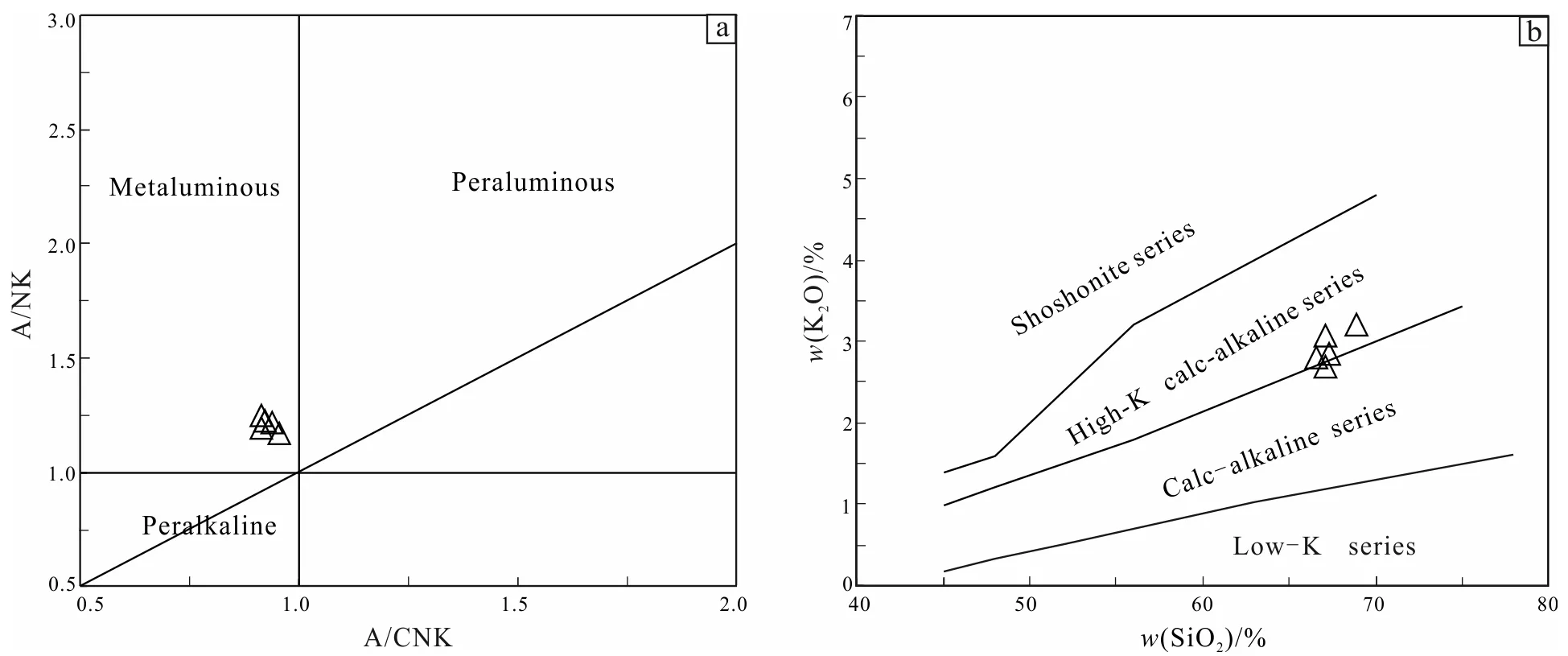
Fig.6 Geochemical discrimination diagrams of A/CNK versus A/NK (a) and K2O versus SiO2 (b) for granite in Huoluotai area
3.2.2 Trace elements
In the standardized cobweb maps of the original mantle of trace elements, the fine-grained granite samples in Huoluotai area are characterized by enrichment of large ion lithophile elements such as Rb, Bb and U, and depletion of high field strength elements such as Nb, Zr and Yb(Fig.7a).The REE model of fine-grained granite in Huoluotai area is right inclined. The total REE content is (142.24--171.03)×10-6. The higher (La/Yb)Nratio (58.22--117.91) indicates that the fractionation of light and heavy REE is strong, while the lower (Gd/Lu)Nratio(5.04--8.74) indicates that the fractionation of heavy REE is not significant. The ratio of LREE/HREE is 25.90--29.60 and the ratio of delta Eu is 0.83--0.99, which indicates that the Eu anomaly is not obvious (Fig.7b).
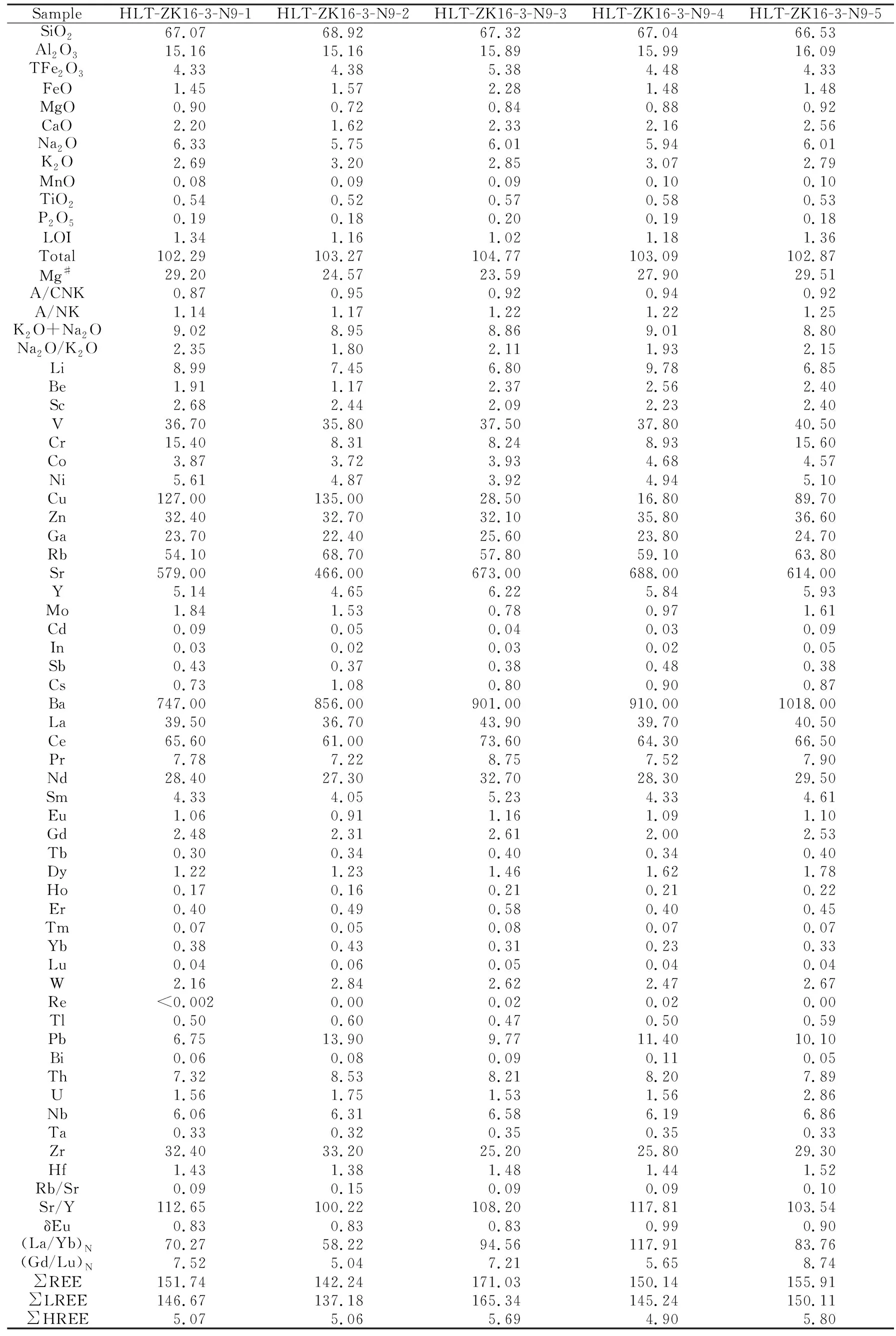
Table 2 Major(%)and trace element(10-6)data for granite in Huoluotai area

Fig.7 Primitive mantle-normalized trace element spider diagrams (a) and chondrite-normalized REE patterns (b) for granite in Huoluotai area
4 Discussion
4.1 Magma source area
The geochemical characteristics of the rocks show that the Huoluotai granite has a high SiO2content of 66.53%--68.92%, an Al2O3content of 15.16%--16.09%, a MgO content of 0.72%--0.91%, an Eu/Eu*value of 0.83--0.99, and a weak negative Eu anomaly, indicating that it originated from the crust. Combined with high Sr of (466.00--688.00)*10-6, low Y of (4.65--6.22)*10-6, high Sr/Y ratio of 100.22--117.81 and La/Yb ratio of 58.2. 2--117.91 and Na2O/K2O of 1.80--2.35, which conform to the geochemical characteristics of typical adakite, it is indicated that the rock is a C-type adakite related to the crust. All sample points in the Sr/Y-Y and (La/Yb)N-YbNdiagrams fall into the adakite region, which is a high-K calc-alkaline adakite.
At present, there are five main genesis of adakite: ①subduction and melting of the young (<25 Ma) plate(Macphersonetal., 2006); ②partial melting of the bottom of the thickened lower crust (Zhangetal., 2010); ③partial melting of the sunken lower crust into the upper mantle (Xuetal., 2002); ④influence of crystallization differentiation (Wangetal., 2006); ⑤influence of migmatization (Zhangetal., 2001). The Huoluotai granite originated from the lower crust, so the possibility of slab subduction and melting reduction can be excluded. Moreover, because the Mg# value of the granite is low (23.59--29.51), the MREE and HREE on the REE distribution map are smooth curve pattern distribution, and the Eu/Eu* value is 0.83--0.99 and is not negatively correlated with the content of SiO2, it is suggested that the crystallization differentiation process is not the main control of magmatic evolution. Dark inclusions are not found in the rocks, indicating that the rocks are not affected by magmatic mixing(Geetal., 2005). Integrating that rock samples fall into the melting region of the thickened lower crust in the MgO-SiO2and Mg#-SiO2diagrams (Fig.8) (Xuetal., 2009). It can be concluded that the granite in the Huoluotai area originated from partial melting of the thickened lower crust.
4.2 Tectonic background
The study area is located in the northern part of the Great Hinggan Range, where tectonic-magmatic activity is very strong. There are different viewpoints on the tectonic background of volcanic rock formation in the Great Hinggan Range (Gaoetal., 2012). One is that the Mesozoic tectonic-magmatic evolution formed mainly by the subduction of the Paleo-Pacific plate under the Eurasian plate, whereas the other is that the Mesozoic tectonic-magmatic evolution is mainly related to the superposition and transformation of Mongolian-Okhotsk structure.. Previous studies have shown that the Paleo-Pacific Plate subducted northward and northeast, parallel to the continental margin of East Asia during the Jurassic-Early Cretaceous. It was not until the Late Cretaceous that the Paleo-Pacific Plate began to subduct directly with the East Asian Continent. Therefore, the authors believe that the tectonic environment of the Early Cretaceous in the Yinaobu area has nothing to do with the oblique subduction of the Paleo-Pacific Plate. In the early Jurassic (J1), the Mongolian-Okhotsk Ocean began to close in the form of scissors from west to east, associated with collision and compression to form orogeny, which resulted in strong thrust nappe and crustal thickening (Fig.9). After the Early Cretaceous closure, strong intracontinental extensional rifting occurred, which resulted in the thinning of the lithosphere and the formation of a series of rift basins (Sheetal., 2012). As shown in the (Y+Nb)--Rb diagram, the sample points all fall in the area of post-collision granite (Fig.10).
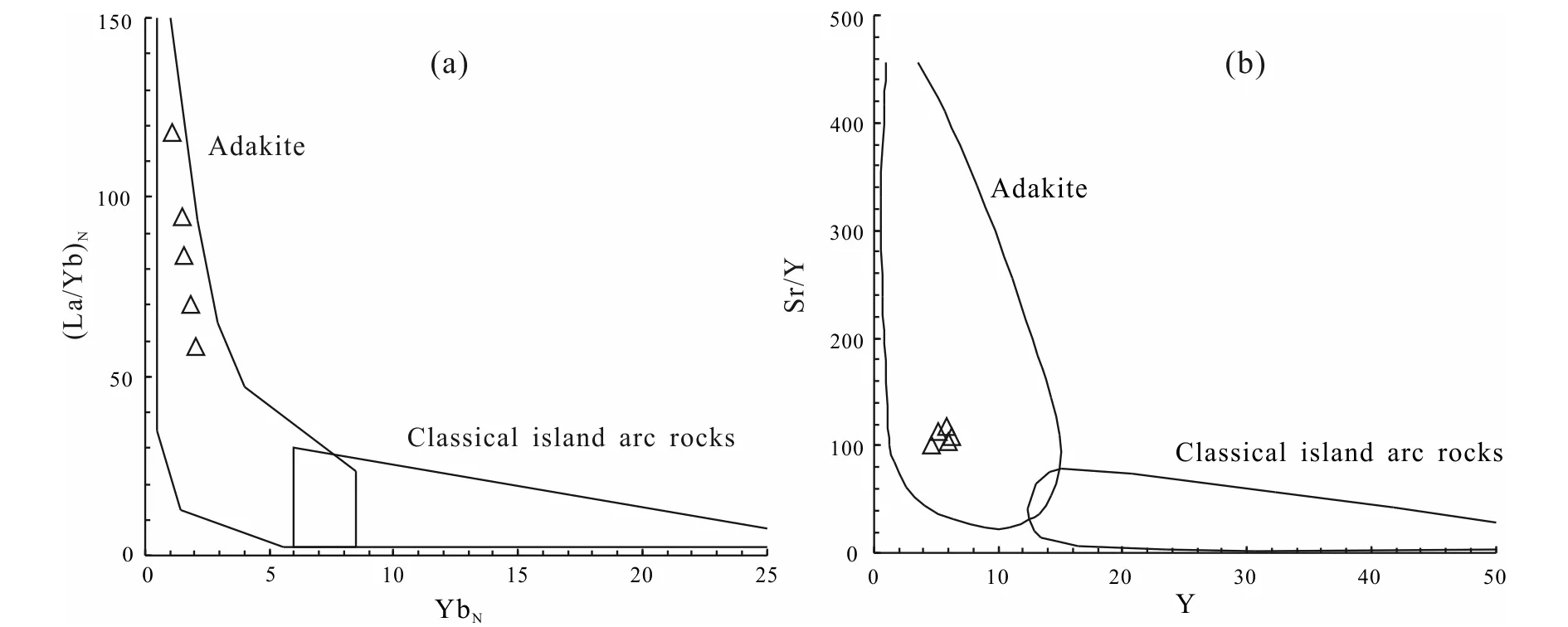
Fig.8 Diagrams of (La/Yb)N-YbN (a) and Sr/Y-Y (b) for adakite
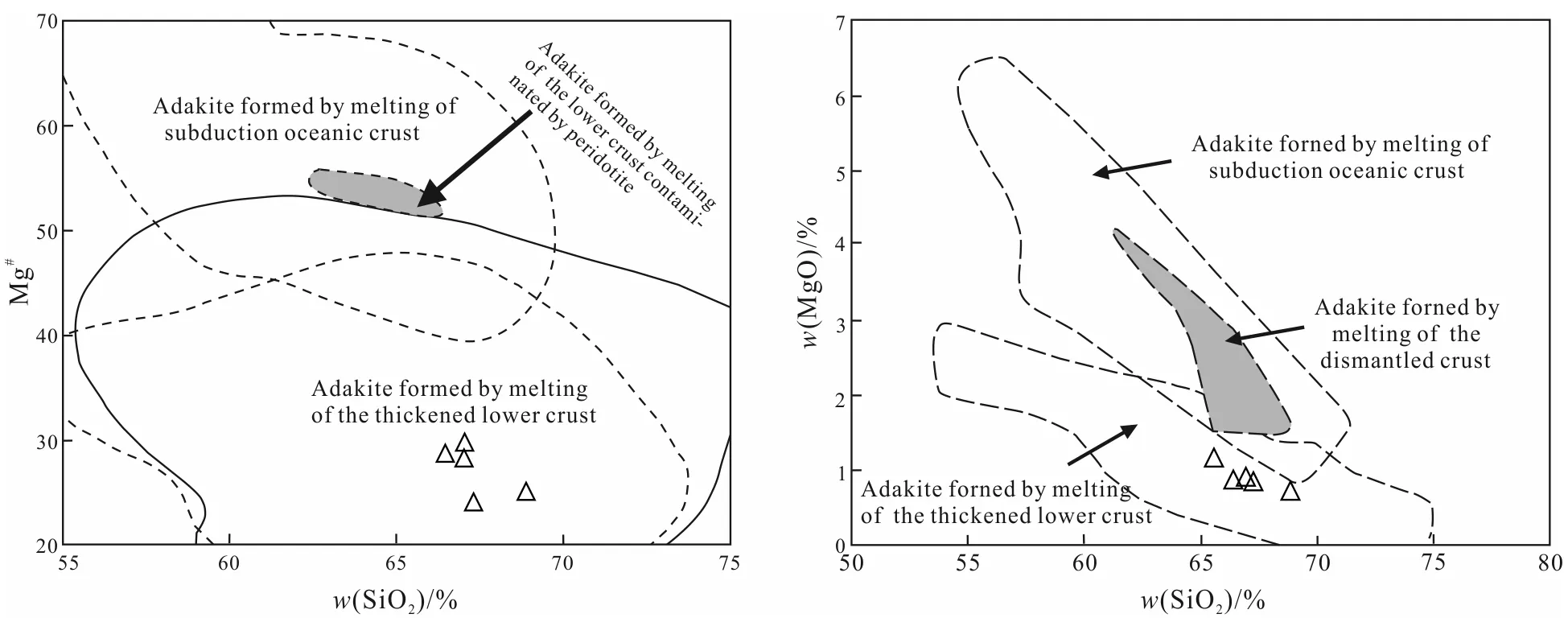
Fig.9 Graph of discrimination of SiO2-Mg # source region

Fig.10 Diagram of(Y+Nb)-Rb for granite
The fine-grained granites in the Huoluotai area were formed in the Early Cretaceous and have the characteristics of adakite. They originated from partial melting of the thickened lower crust (Chenetal., 2018). Therefore, it can be inferred that the primitive magma of the rock should be formed in the transitional period after the closure of Mongolia-Okhotsk Ocean and before the extension, that is, the collision and compression orogeny occurs with the closure of Mongolia-Okhotsk Ocean, resulting in the thickening of the lower crust of the lithosphere. According to the principle of crustal equilibrium, the lower part of the lower crust is partially melted and crystallized to form acidic granitic magma.
5 Conclusions
(1)The average U-Pb weighted age of zircons from fine-grained granites in the Huoluotai area is 148.12±0.85 Ma, MSWD=0.026, which is the product of Cretaceous magmatic intrusion.
(2)The granite is a high-K calc-alkaline quasi-aluminous granite with adakite properties and originated from partial melting of the thickened lower crust.
(3)The formation of the granite is related to the collision-compression orogeny after the closure of the Mongolian-Okhotsk Ocean.
杂志排行
Global Geology的其它文章
- Identification model of geochemical anomaly basedon isolation forest algorithm
- Structural mechanism and construction method of mud andwater inrush in Xiangyun tunnel of Guangtong-Dali railway
- Regularized focusing inversion for large-scalegravity data based on GPU parallel computing
- Logging interpretation method for reservoirs with complexpore structure in Mesozoic-Cenozoic faulted basinaround Daqing exploration area
- Slope reliability analysis based onMonte Carlo simulation and sparse grid method
- Mode decomposition methods and their application inground penetrating radar data processing
